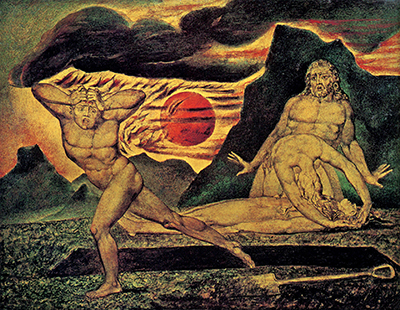William Blake was one of the pioneer artists of the visual artwork that marked the romantic era. Even though he was little known among his contemporaries, his work has earned him a place among the greatest poets in the English Language.
Leaders of the neoclassical movement, such as Thomas Stothard, and John Flaxman, inspired and nurtured his interest in the romanticism movement. His works were also influenced by the view of the artistic establishment that art must address great historical, philosophical, and religious subjects. His religious paintings bore the ideologies of the Dissenters of his time, such as Emanuel Swedenborg and Jacob Boehme. The Body of Abel Found by Adam and Eve painting takes a similar tangent. Medium: Black ink, tempera, and gold on mahogany.
The painting draws from a biblical story in the book of Genesis, chapter four. Cain gets angry because God did not accept his sacrifice and lures his brother to the field where he kills him. The painting offers an extra-biblical account of the scene when the parents found their dead son. Lying heads-up is the lifeless body of Abel, next to a grave that Cain had possibly dug to bury his brother. Eve's body is twisted over her son, suggesting the writhing anguish a mother feels over their dead child.
Adam looks scared with his hands stretched out as if he is trying to hold back the towering mountain from caving in on them. Blake seems to suggest the overwhelming struggle the husband goes through to hold back the tides of evil from his family while trying to maintain a steady face. Eve's hidden face seems to suggest her inability to face the world and her killer son in her anguish. Blake's approach seems to be inspired by Lavater, who insisted that a person’s appearance is always better than his actions. However, Lavater also suggested that doing an evil act disfigures a person. It might explain why Blake gave Cain a distorted body.
However, it seems that in this painting, Blake deviated from Lavater, by employing a philosophy pathognomy, which is the way of reading emotions through the shape of the body. He depicts Eve's overwhelming sorrow by a twisted body instead of giving her a brooding teary face, as others of his time would have. Finally, Blake being a firm believer in experience influencing art, seems to represent himself in the depiction of Adam. He barely earned enough, was ignored by the elites of his time, had no kids, and had to home school his illiterate wife. Yet, he protected all these personal struggles from affecting his beloved occupation, art.




